5 Strength Exercises Women Should Do Every Day To Stay Fit
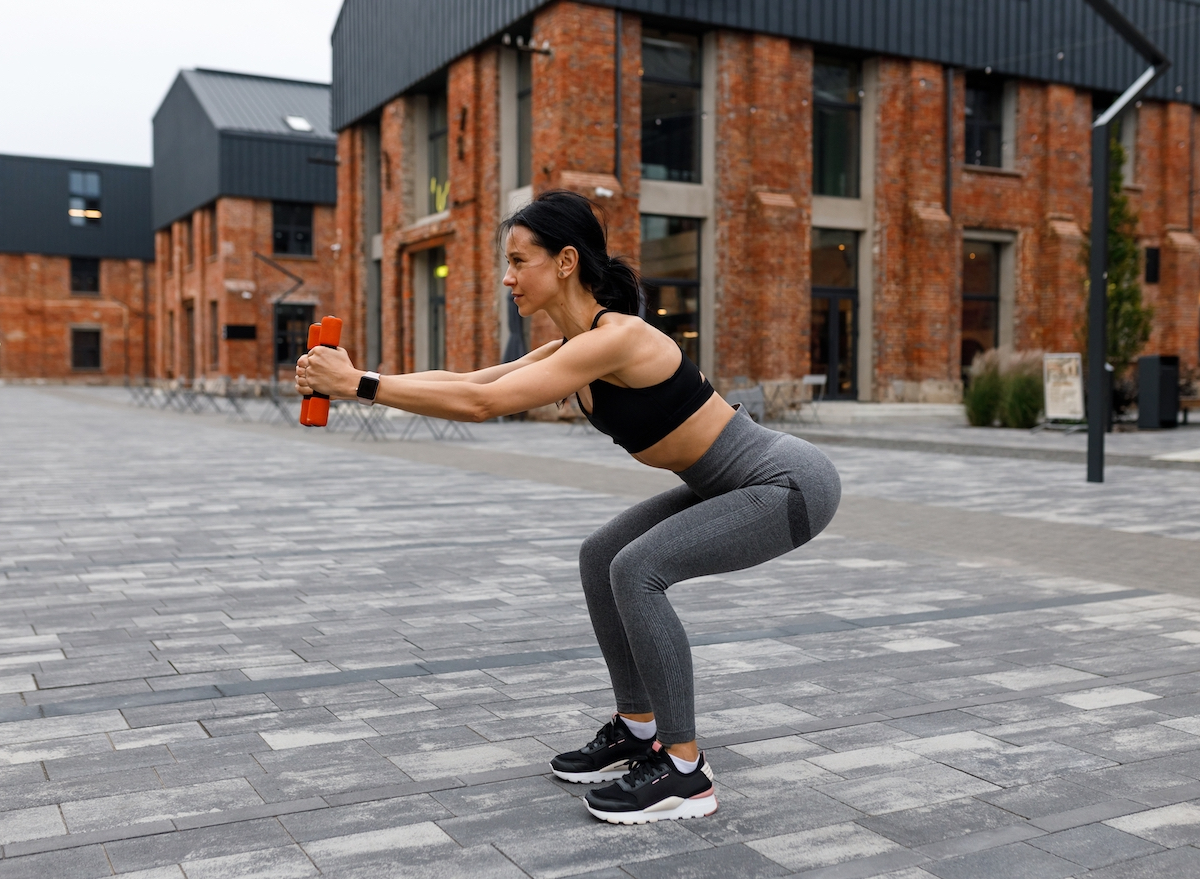
If you're wondering how strength training can improve your physical fitness, health, and overall lifestyle, listen up. Aerobic exercise may play an integral role in keeping you in shape, but don't play favorites and sleep on the benefits of strength exercises. Whether you want to melt body fat, tighten your tummy, sculpt lean muscle, or all of the above, strength training is here to slay. Considering the fact that losing muscle mass is a natural part of growing older, performing muscle-strengthening exercises should be an essential part of your fitness routine. Denise Chakoian, owner and founder of CORE Cycle.Fitness.Lagree, certified personal trainer, cancer exercise specialist, and boutique fitness consultant, shares with us some of the most productive strength exercises for women to do daily to stay fit.
Maintaining a fit physique goes beyond aesthetics. (Filling out your jeans in all the right places is just an added bonus!) Staying in great shape helps you continue to lead an independent and active life, avoid the health risks associated with being overweight, strengthen your bones, and get a handle on any chronic health issues. Resistance training can truly be considered "medicine," and research says so. Adults who are inactive can lose anywhere from 3% to 8% of their lean muscle mass every 10 years, along with accumulating more body fat and experiencing a decreased resting metabolic rate. By doing resistance exercises for just 10 weeks, you can boost your resting metabolic rate by 7% and decrease your fat weight by almost four pounds.
Now that you know how beneficial strength training can be, let's get into how you can add it to your daily routine. Chakoian shares five of the absolute best strength exercises for women to start doing ASAP. Keep reading to learn all about them, and when you're finished, check out the 5 Best Exercises To Keep You Feeling Young, Firm, & Fit After 40.
Pushups
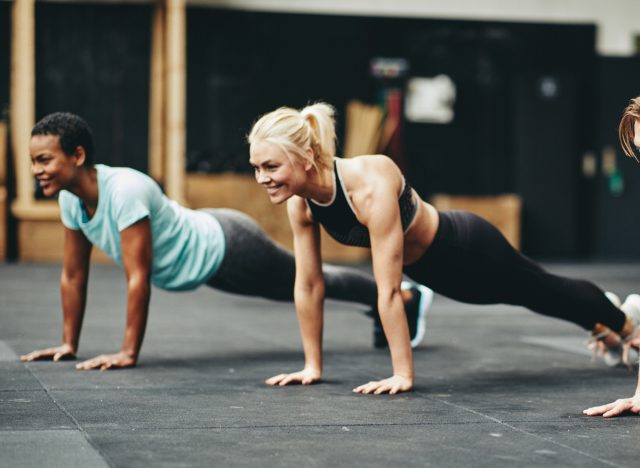
"[The pushup is a] full-body strength functional movement that incorporates chest, biceps, triceps, back, shoulders, and core," Chakoian explains. "There are also various ways to change the positioning of a pushup to make it much more challenging, such as changing the hand position closer (working more triceps), or wider [which works] more of the chest. [Try] feet closed to work the core more than [if you were to position your] feet apart."
To set up for pushups, assume a high plank with your hands under your shoulders and your body in a straight line. Come up to the balls of your feet. Bend your elbows in order to lower your chest toward the ground. Then, press yourself back up to a high plank where you started. Chakoian recommends performing two to three sets of 15 to 20 reps to build up your bodyweight strength.
Squats
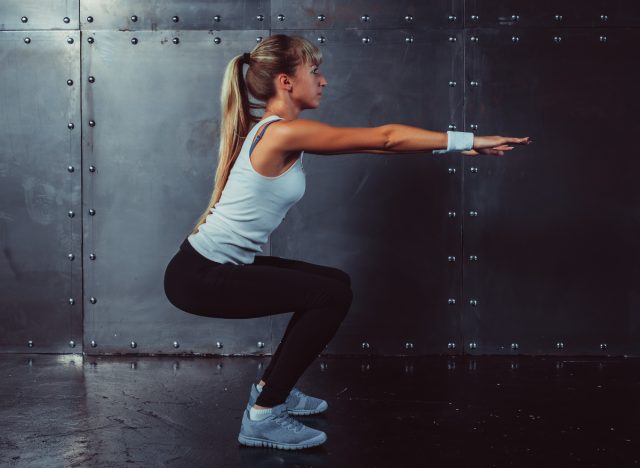
"This can be done bodyweight style or adding weights, which makes it much more challenging," Chakoain says. "Squats are probably one of the most important functional exercises to do to strengthen the glutes, hamstrings, and quadriceps."
To perform squats, position your feet shoulder-width apart on the floor. Keep your hands on your hips, extend your arms ahead of you, or hold a dumbbell in each hand. Then, press your hips back, and lower into a squat until your thighs are parallel to the ground. Push against the floor in order to come back up to standing. Complete three sets of 15 to 20 reps. After doing each set, hold the squat position for 10 to 20 seconds.
Lunges
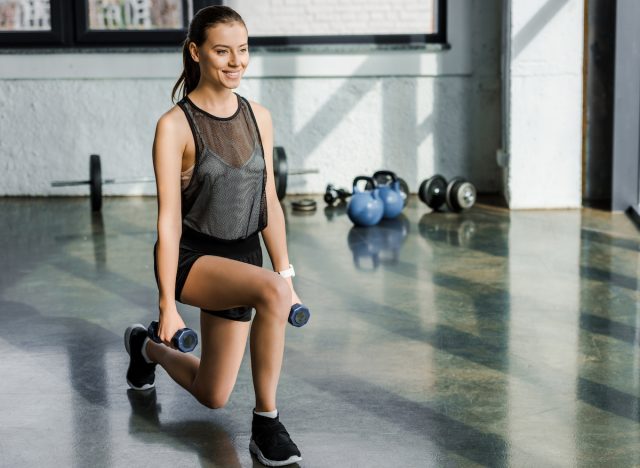
According to Chakoain, "Lunges can be done in a forward, backward, or transverse position. Lunges not only are a full leg workout, but they also add a component of cardiovascular increase. Lunges can be done bodyweight style, or using weights by your side to add more load and challenge the stability of the exercise."
For lunges, assume a split squat stance with one leg ahead of you and one behind you. Place your hands on your hips, or hold a dumbbell in each hand at your sides. Then, bend your knees to descend into a lunge. Press through your feet in order to rise back up. You can do lunges timed (three sets lasting one minute each) or via reps for two to three sets of 15 reps on each leg.
Jumping Jacks
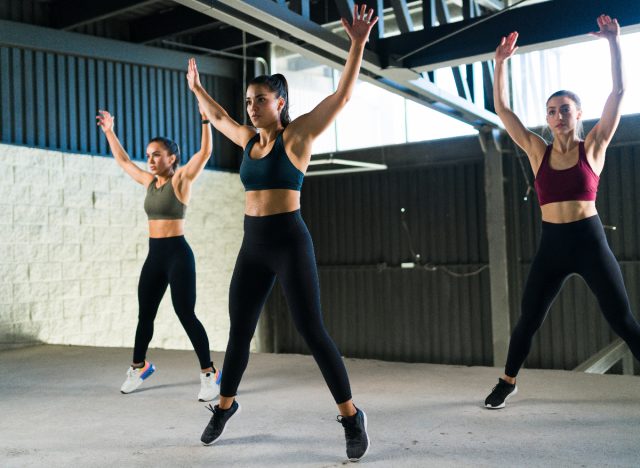
Next up, Chakoain recommends doing any form of jumping, if you're able to, like jump squats or jumping jacks. "This allows for the metabolic rate to increase and 'shock' the body," she explains. "Keeping a high level of cardiovascular training is important through interval training to keep the body overall fit while also incorporating strength training."
Jumping jacks start with your arms extended at your sides and your feet shoulder-width apart. Jump up as you raise your arms overhead and press your feet out wider. Then, jump back to the start position, bringing your arms down.
Planks
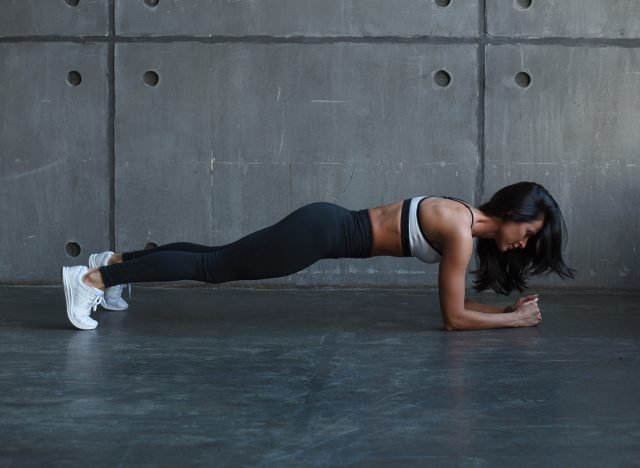
Chakoain's list of top strength exercises for women wraps up with planks. Love them or hate them, planks will challenge your core strength, upper body, and the stability of your spine. You can perform forearm planks or high planks with your hands planted on the floor below your shoulders. Regardless, your body should form a straight line, your core should be engaged, and you should be on the balls of your feet. If you're just starting out, feel free to do plank holds for 10 seconds at a time, and keep adding 10-second increments until you get to one minute.









